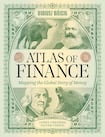
Atlases and encyclopedias have, I think, a certain status in the hierarchy of books. Their larger dimensions cause them to reside more on the shelves of libraries than the shelves of homes. Their aim to include so much knowledge on so many topics lends such works an air of noble authority and ambition.
This status may have recently diminished. Reference books struggle to match the instant, weightless and mobile power of the internet.
[ Pains and gains: Paschal Donohoe on three books about economic growthOpens in new window ]
However, atlases may be staging a comeback. These heavyweights may yet prosper in a more digital world. University College Cork is publishing a magnificent and beautiful series of atlases on topics from our coast to our revolutionary era. The “Our World in Data” project, led by the University of Oxford, utilises the visualisation of information to explain the big trends in our world.
[ Draghi diagnoses economic ills but will EU take his medicine?Opens in new window ]
The Atlas of Finance by Dariusz Wójcik demonstrates the vitality in this genre. Finance and economies must be mapped and visualised in “creative and critical ways if only because it’s nearly impossible to solve problems you cannot see”.
Economic powers and maps are intertwined. The greatest mapmakers of the 15th, 16th and 17th centuries worked in leading financial and trade centres. Venice, Antwerp and Amsterdam were the homes of leading geographers because their traders wanted maps to understand and profit from the world.
This book was helped by a grant from the European Union that funded the analysis of millions of data points. This was money well-spent. The maps are organised around important themes, including assets and markets, bubbles and crises, and technology. It is a wonderful achievement, shining light on many crevices of our economies and their histories.
The chart that compares how different governments are saving for the futures of their countries is very relevant to decisions now being made. The map on credit histories of American consumers is a little masterpiece of economic research. Maps on topics from Islamic finance to the rise of new financial technologies show a powerful focus on the entire world.
Due to our role in the economic geography of Europe and the world, Ireland is present on many of these maps.
I have many hopes for this book. That it is in the libraries of our schools not just our universities. I hope that it reaches the bookshelves of some homes too. Also, that it has a sequel.















